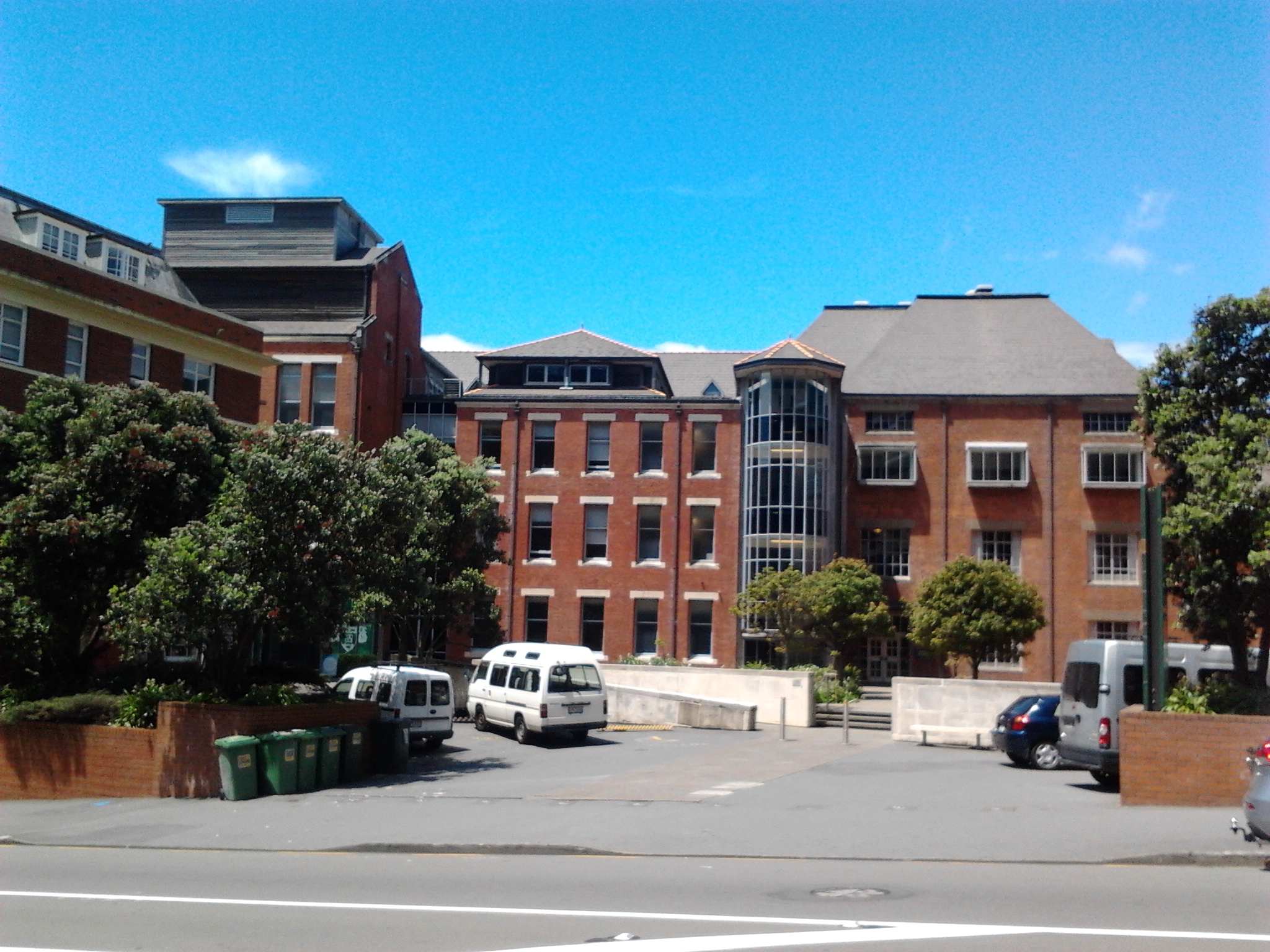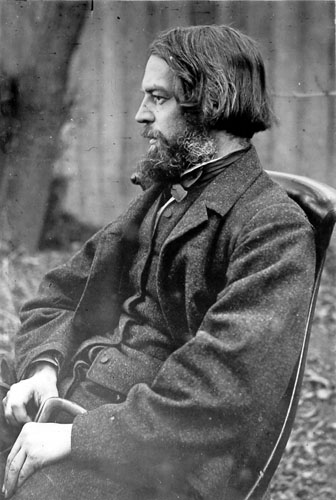|
University Of Otago Registry Building
The University of Otago Registry Building, also known as the Clocktower Building, is a Victorian and later structure in the city of Dunedin, New Zealand. It stands next to the banks of the Water of Leith and is constructed from contrasting dark Leith Valley basalt and Oamaru stone, with a foundation of Port Chalmers breccia. The building houses the administrative centre of the university, and the office of the Vice-Chancellor. It has a Category I listing with Heritage New Zealand. It is the principal element of the Clocktower complex, the group of Gothic revival buildings at the heart of the University of Otago's campus (University of Otago Clocktower complex). The most prominent of the group it was designed and re-designed by Maxwell Bury (1825–1912) and Edmund Anscombe (1874–1948), between the 1870s and the 1920s. This resulted in a revised geometry and a change to the original conception. History Bury first conceived a classical building which he re-dressed in the Gothic ... [...More Info...] [...Related Items...] OR: [Wikipedia] [Google] [Baidu] |
Gothic Revival
Gothic Revival (also referred to as Victorian Gothic, neo-Gothic, or Gothick) is an architectural movement that began in the late 1740s in England. The movement gained momentum and expanded in the first half of the 19th century, as increasingly serious and learned admirers of the neo-Gothic styles sought to revive medieval Gothic architecture, intending to complement or even supersede the neoclassical styles prevalent at the time. Gothic Revival draws upon features of medieval examples, including decorative patterns, finials, lancet windows, and hood moulds. By the middle of the 19th century, Gothic had become the preeminent architectural style in the Western world, only to fall out of fashion in the 1880s and early 1890s. The Gothic Revival movement's roots are intertwined with philosophical movements associated with Catholicism and a re-awakening of high church or Anglo-Catholic belief concerned by the growth of religious nonconformism. Ultimately, the "Anglo-Catholicism" t ... [...More Info...] [...Related Items...] OR: [Wikipedia] [Google] [Baidu] |
Victoria University Of Wellington
Victoria University of Wellington ( mi, Te Herenga Waka) is a university in Wellington, New Zealand. It was established in 1897 by Act of Parliament, and was a constituent college of the University of New Zealand. The university is well known for its programmes in law, the humanities, and some scientific disciplines, and offers a broad range of other courses. Entry to all courses at first year is open, and entry to second year in some programmes (e.g. law, criminology, creative writing, architecture, engineering) is restricted. Victoria had the highest average research grade in the New Zealand Government's Performance Based Research Fund exercise in both 2012 and 2018, having been ranked 4th in 2006 and 3rd in 2003. [...More Info...] [...Related Items...] OR: [Wikipedia] [Google] [Baidu] |
Hunter Building
The Hunter Building is the original building of Victoria University of Wellington's Kelburn campus in Wellington, New Zealand. It is a major landmark in the Wellington region and closely associated and considered a symbol of the university. The distinct architecture of the building is a notable example of Edwardian Gothic-revival, with red brick and Oamaru stone façade, along with grand internal entrances, staircases and original university library. The building is a noteworthy example of work from the Wellington architectural practice of Penty & Blake. While opened on the 30th of March 1906, the building was not completed to its original design, but was progressively added to as the college grew. The building is named after Sir Thomas Alexander Hunter, a well regarded professor of mental science and political economy. Following the end of the Great War, northern and southern wings were added to the building, providing new teaching areas, recreational spaces and a new library. ... [...More Info...] [...Related Items...] OR: [Wikipedia] [Google] [Baidu] |
Gothic Revival
Gothic Revival (also referred to as Victorian Gothic, neo-Gothic, or Gothick) is an architectural movement that began in the late 1740s in England. The movement gained momentum and expanded in the first half of the 19th century, as increasingly serious and learned admirers of the neo-Gothic styles sought to revive medieval Gothic architecture, intending to complement or even supersede the neoclassical styles prevalent at the time. Gothic Revival draws upon features of medieval examples, including decorative patterns, finials, lancet windows, and hood moulds. By the middle of the 19th century, Gothic had become the preeminent architectural style in the Western world, only to fall out of fashion in the 1880s and early 1890s. The Gothic Revival movement's roots are intertwined with philosophical movements associated with Catholicism and a re-awakening of high church or Anglo-Catholic belief concerned by the growth of religious nonconformism. Ultimately, the "Anglo-Catholicism" t ... [...More Info...] [...Related Items...] OR: [Wikipedia] [Google] [Baidu] |
Benjamin Mountfort
Benjamin Woolfield Mountfort (13 March 1825 – 15 March 1898) was an English emigrant to New Zealand, where he became one of the country's most prominent 19th-century architects. He was instrumental in shaping the city of Christchurch's unique architectural identity and culture, and was appointed the first official Provincial Architect of the developing province of Canterbury, New Zealand, Canterbury. Heavily influenced by the Anglo-Catholicism, Anglo-Catholic philosophy behind early Victorian architecture, he is credited with importing the Gothic revival style to New Zealand. His Gothic designs constructed in both wood and stone in the province are considered unique to New Zealand. Today, he is considered the founding architect of the province of Canterbury. Early life Mountfort was born in Birmingham, an industrial town in the English Midlands, Midlands of England. He was the son of perfume manufacturer and jeweller Thomas Mountfort and his wife Susanna (née Woolfield). As a ... [...More Info...] [...Related Items...] OR: [Wikipedia] [Google] [Baidu] |
University Of Canterbury
The University of Canterbury ( mi, Te Whare Wānanga o Waitaha; postnominal abbreviation ''Cantuar.'' or ''Cant.'' for ''Cantuariensis'', the Latin name for Canterbury) is a public research university based in Christchurch, New Zealand. It was founded in 1873 as Canterbury College, the first constituent college of the University of New Zealand. It is New Zealand's second-oldest university, after the University of Otago, itself founded four years earlier in 1869. Its original campus was in the Christchurch Central City, but in 1961 it became an independent university and began moving out of its original neo-gothic buildings, which were re-purposed as the Christchurch Arts Centre. The move was completed on 1 May 1975 and the university now operates its main campus in the Christchurch suburb of Ilam. The university is well known for its Engineering and Science programmes, with its Civil Engineering programme ranked 9th in the world (Academic Ranking of World Universities, 2021). ... [...More Info...] [...Related Items...] OR: [Wikipedia] [Google] [Baidu] |
Canterbury College
Canterbury College may refer to: * Canterbury College (Indiana), U.S. * Canterbury College (Waterford), Queensland, Australia * Canterbury College (Windsor, Ontario), Canada * Canterbury College, Kent, England * Canterbury College, Oxford, England * Canterbury Girls' Secondary College, Victoria, Australia * Canterbury University (Seychelles) * University of Canterbury The University of Canterbury ( mi, Te Whare Wānanga o Waitaha; postnominal abbreviation ''Cantuar.'' or ''Cant.'' for ''Cantuariensis'', the Latin name for Canterbury) is a public research university based in Christchurch, New Zealand. It was ..., New Zealand See also * Canterbury (other) {{school disambiguation ... [...More Info...] [...Related Items...] OR: [Wikipedia] [Google] [Baidu] |
Otago Clocktower Race
Otago (, ; mi, Ōtākou ) is a region of New Zealand located in the southern half of the South Island administered by the Otago Regional Council. It has an area of approximately , making it the country's second largest local government region. Its population was The name "Otago" is the local southern Māori dialect pronunciation of "Ōtākou", the name of the Māori village near the entrance to Otago Harbour. The exact meaning of the term is disputed, with common translations being "isolated village" and "place of red earth", the latter referring to the reddish-ochre clay which is common in the area around Dunedin. "Otago" is also the old name of the European settlement on the harbour, established by the Weller Brothers in 1831, which lies close to Otakou. The upper harbour later became the focus of the Otago Association, an offshoot of the Free Church of Scotland, notable for its adoption of the principle that ordinary people, not the landowner, should choose the minister ... [...More Info...] [...Related Items...] OR: [Wikipedia] [Google] [Baidu] |
Big Ben
Big Ben is the nickname for the Great Bell of the Great Clock of Westminster, at the north end of the Palace of Westminster in London, England, and the name is frequently extended to refer also to the clock and the clock tower. The official name of the tower in which Big Ben is located was originally the Clock Tower, but it was renamed Elizabeth Tower in 2012 to mark the Diamond Jubilee of Elizabeth II. The tower was designed by Augustus Pugin in a neo-Gothic style. When completed in 1859, its clock was the largest and most accurate four-faced striking and chiming clock in the world. The tower stands tall, and the climb from ground level to the belfry is 334 steps. Its base is square, measuring on each side. Dials of the clock are in diameter. All four nations of the UK are represented on the tower on shields featuring a rose for England, thistle for Scotland, shamrock for Ireland, and leek for Wales. On 31 May 2009, celebrations were held to mark the tower's 150th a ... [...More Info...] [...Related Items...] OR: [Wikipedia] [Google] [Baidu] |
Scarisbrick Hall
Scarisbrick Hall is a country house situated just to the south-east of the village of Scarisbrick in Lancashire, England. History Scarisbrick Hall was the ancestral home of the Scarisbrick family and dates back to the time of King Stephen (1135–1154). The moated site of the original Scarisbrick Hall lies north-west of the present building. A tree-covered island measuring is flanked on two sides by a still waterlogged moat, with the north-eastern arm formed by Eas Brook. This half-timbered, manor house is recorded in an early 13th-century deed. The area is protected by scheduled monument status. The Scarisbrick family lived on the site from 1238 until the house was sold in 1946 to become a training college. Parts of the present building, which is considered to be one of the finest examples of Victorian Gothic architecture in England, were designed by the architect Augustus Pugin. The most notable feature of Scarisbrick Hall is the 100-foot tower, which is visible from many m ... [...More Info...] [...Related Items...] OR: [Wikipedia] [Google] [Baidu] |
St Pancras Station
St Pancras railway station (), also known as London St Pancras or St Pancras International and officially since 2007 as London St Pancras International, is a central London railway terminus on Euston Road in the London Borough of Camden. It is the terminus for Eurostar services from Belgium, France and the Netherlands to London. It provides East Midlands Railway services to , , , and on the Midland Main Line, Southeastern high-speed trains to Kent via and , and Thameslink cross-London services to Bedford, Cambridge, Peterborough, Brighton, Horsham and Gatwick Airport. It stands between the British Library, the Regent's Canal and London King's Cross railway station, with which it shares a London Underground station, . The station was constructed by the Midland Railway (MR), which had an extensive rail network across the Midlands and the North of England, but no dedicated line into London. After rail traffic problems following the 1862 International Exhibition, the MR decided ... [...More Info...] [...Related Items...] OR: [Wikipedia] [Google] [Baidu] |






.jpg)

